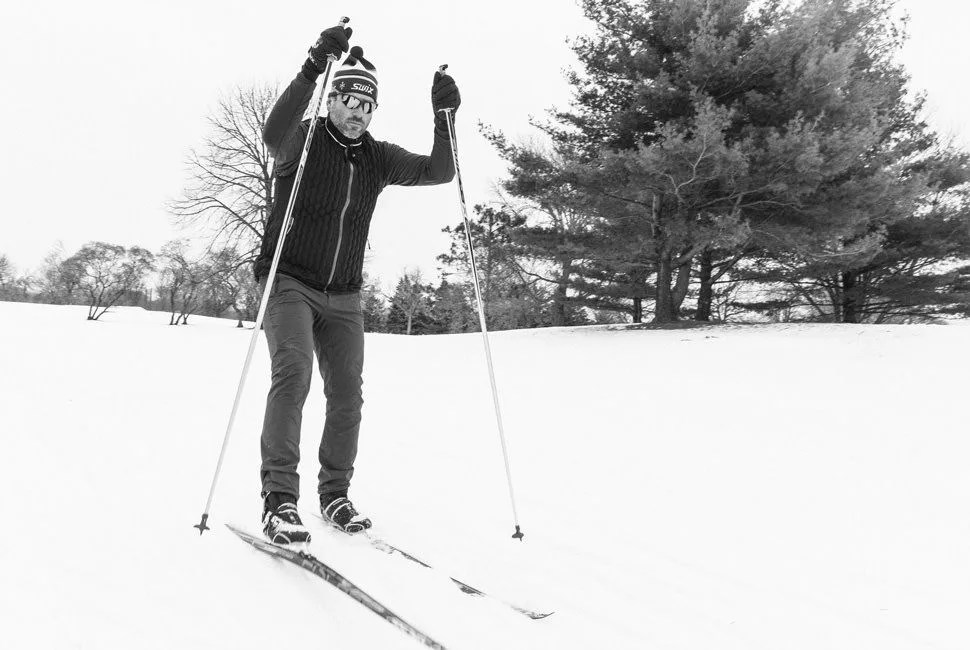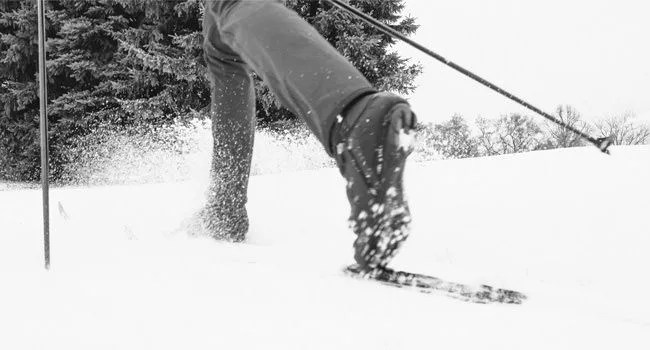Not long after I learned to walk, I learned to ski. Cross-country ski, that is. While kids growing up in the Rockies or the Alps might be snowplowing down the bunny hill at age four, in Wisconsin, where I grew up, the topography is decidedly more horizontal, which meant weekends were spent on snow-covered golf courses with stubby plastic skis on my feet. As I grew, so did my skis and my abilities. After mastering the kick and glide, I learned to read snow and choose the right wax for grip and grew to relish the ritual of crayoning it on my 210-centimeter Splitkeins.
MORE SKIING: The Power of 4 Ski Race | Patrouille des Glaciers | Shooting Breck’s Peak 6 on Film
In the early 1980s, an American skier named Bill Koch stepped off the groomed tracks during a race and started skating on the snow. It turned out he could go a lot faster than kicking and gliding. The technique caught on and became known, appropriately, as “skate skiing”. By the next Olympics, designated freestyle races meant competitors could ski however they wanted. Most chose skating. The traditional way of skiing, pioneered by Scandinavian hunters and used for centuries, became known as “classic” skiing and was now decidedly old school — slow and boring, the skiing your parents did.
There are parallels in other sports to the dichotomy between skate and classic skiing. In cycling, there are touring cyclists and road cyclists; on the trail, mountain bikers and hikers; on the slopes, there are snowboarders and skiers; and even among downhill skiing, there are telemark, freestyle and traditional alpine disciplines. Among all of these, there are turf wars, snarky comments, even different fashion.
Classic skiing was now decidedly old school — slow and boring, the skiing your parents did.
It’s the same with cross-country skiing. Go to any groomed ski trail in the winter and you’ll find a wide corduroy swath filled with sleek, Lycra-clad skaters swishing along, their heart rate monitors keeping them in their training zone. Along the side, in the deep parallel tracks are the classic skiers, a mongrel set of Luddites and grannies, shuffling along in their woolen knickers and pom-pom caps, some with wooden garage sale skis and leather boots.
Having come of age during the pre-skate era, I took a defiant view of the newer discipline, stubbornly clinging to the traditional method. Sure, with skating you can go faster, but speed isn’t everything unless you’re competing for a medal. Besides, with skate skiing, you need groomed trails. I like the idea that with classic skis, you can go off-trail and plow through knee-deep snow, exploring new territory. And I was a fast classic skier; I made a point of chasing down skaters and holding their pace, waiting for the look of surprise when they glance over and see me kicking along beside them, never mind that I was redlining my heart rate while they were just cruising.

